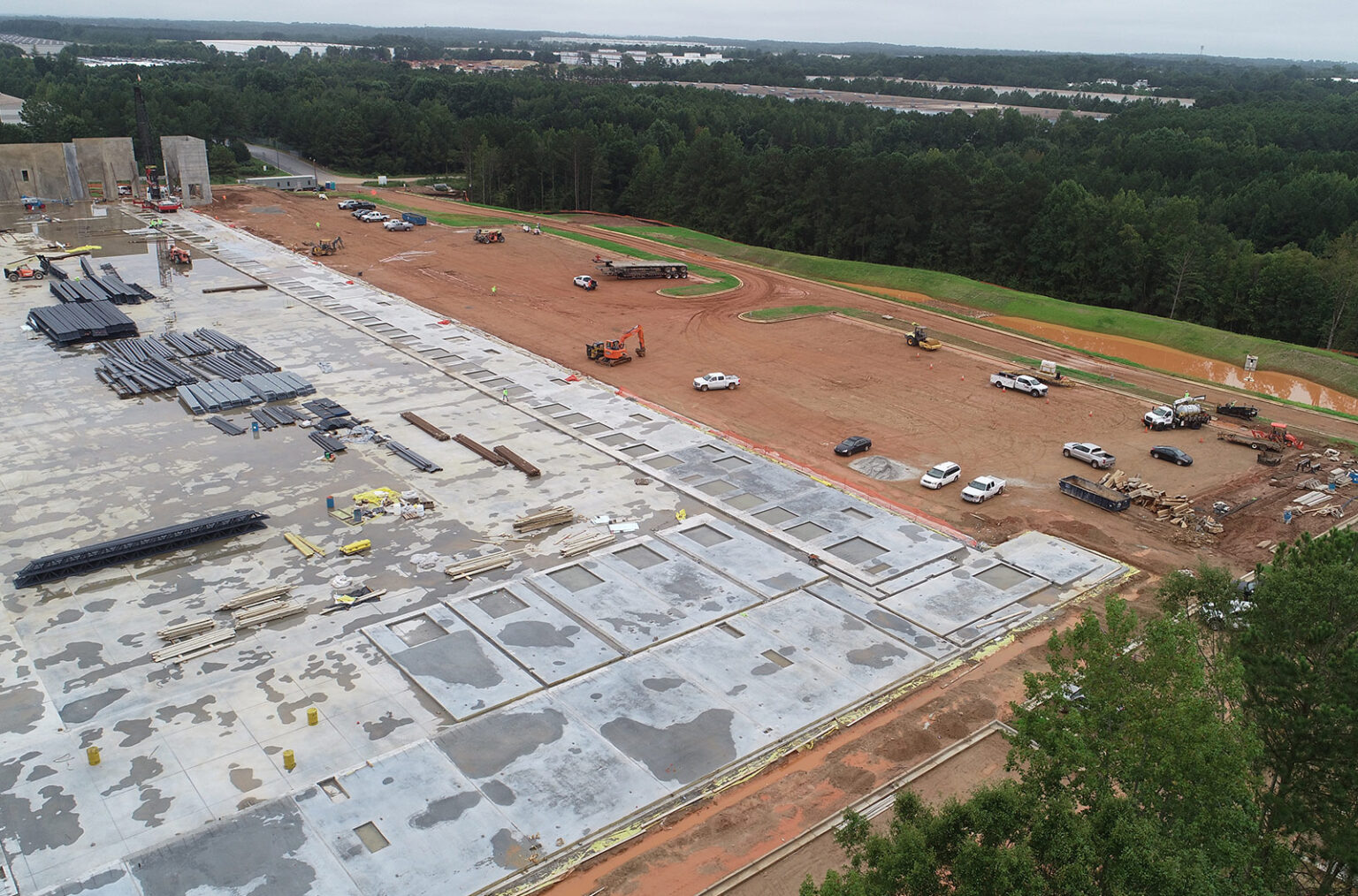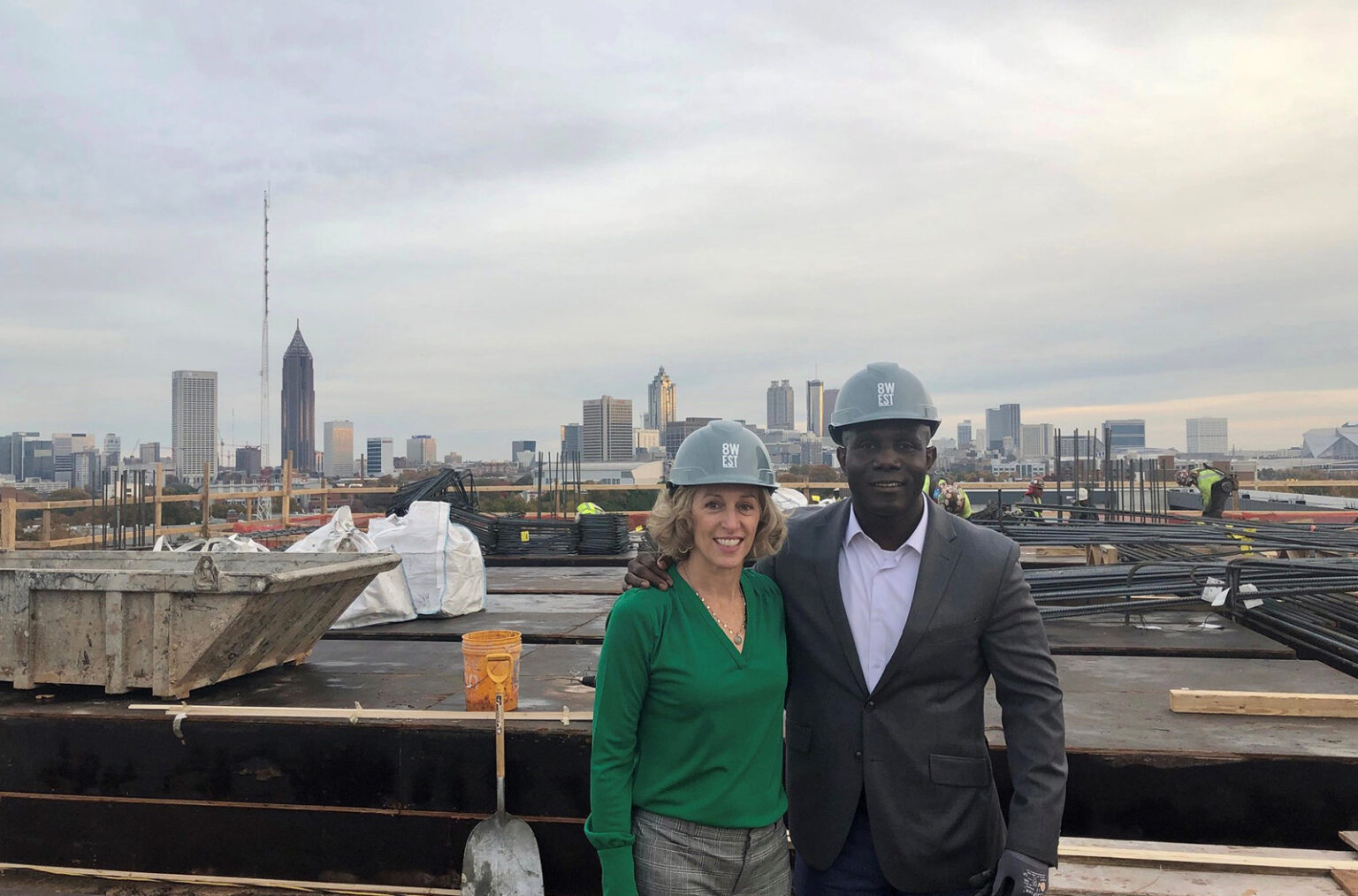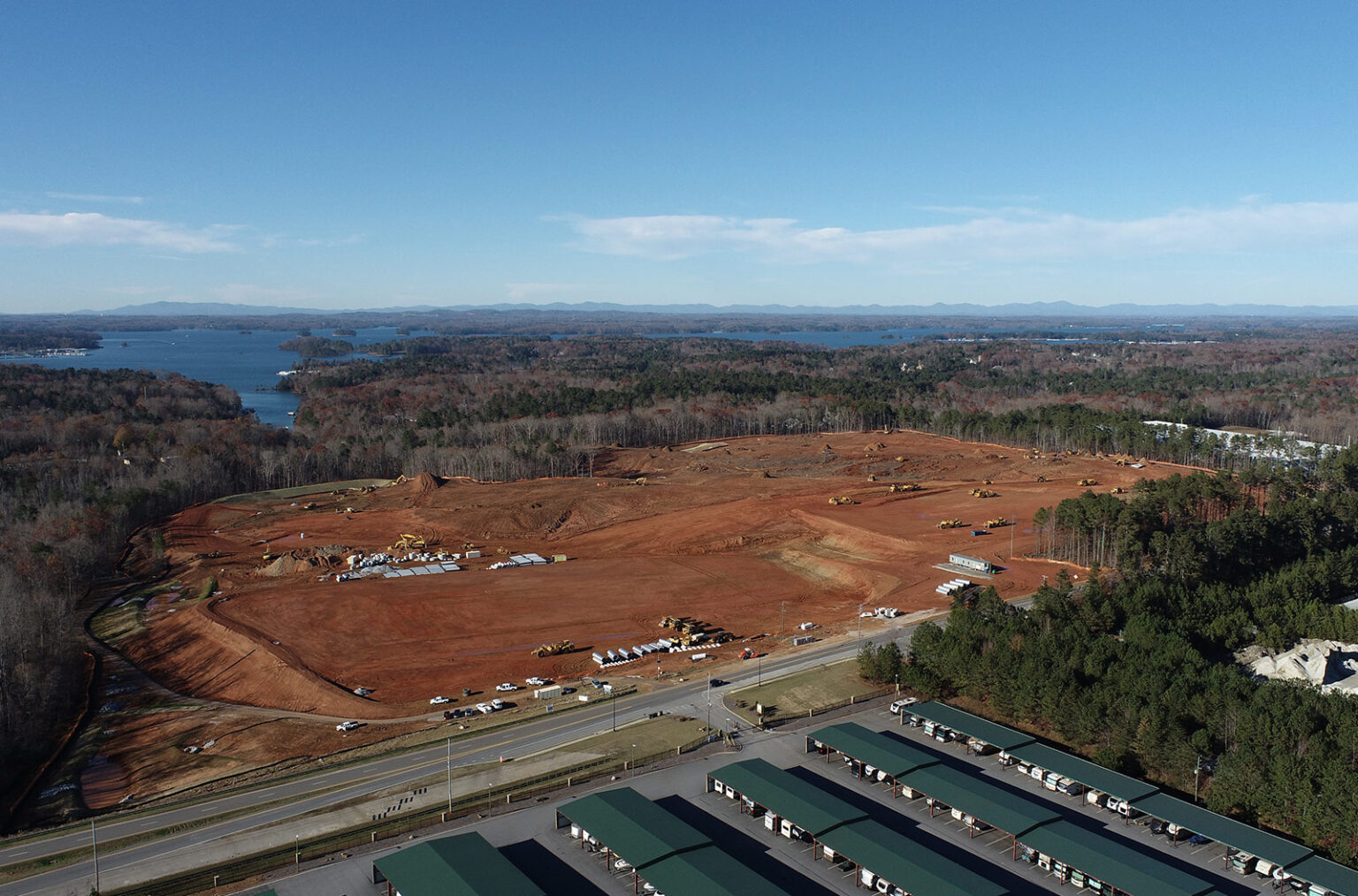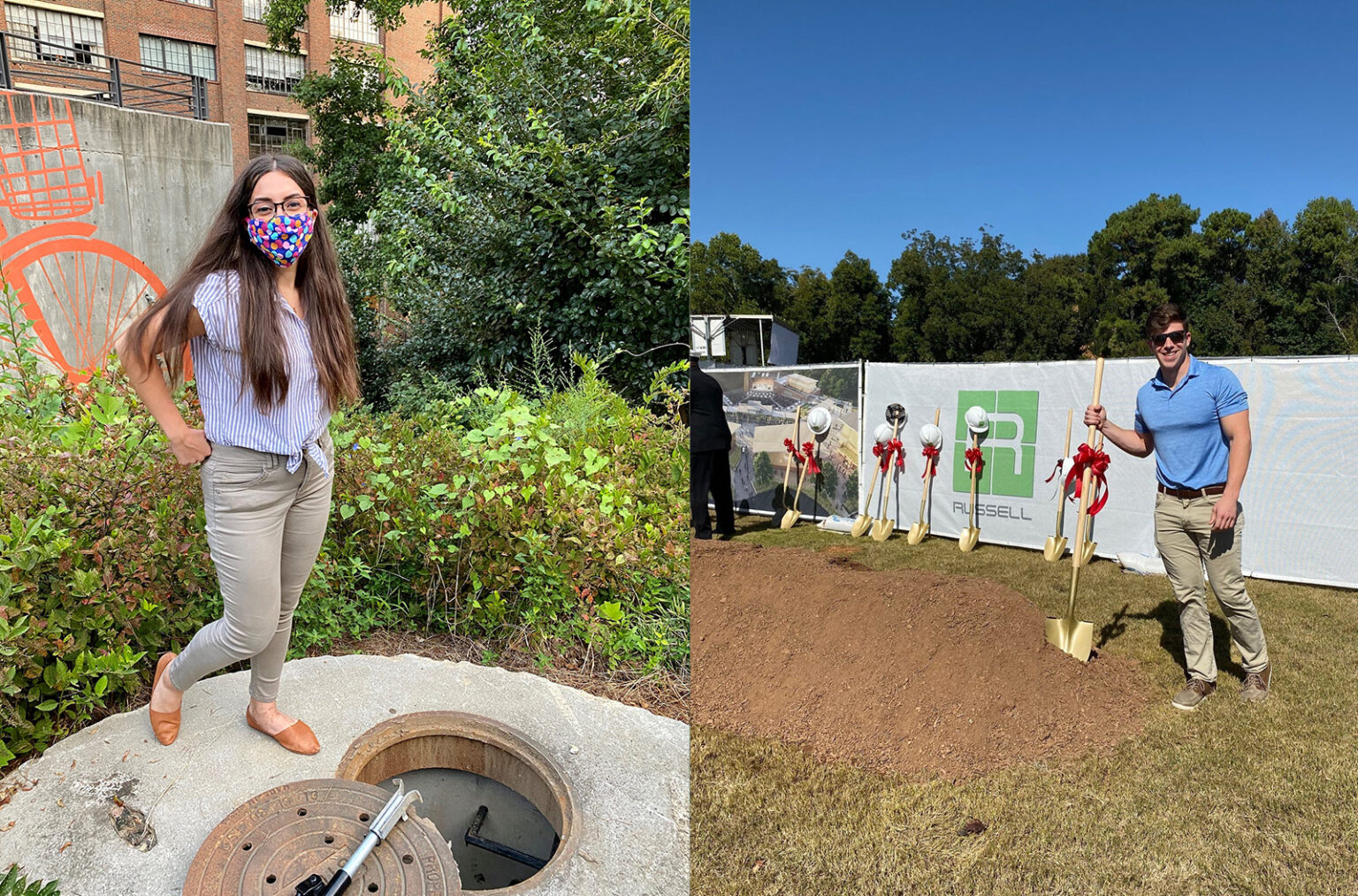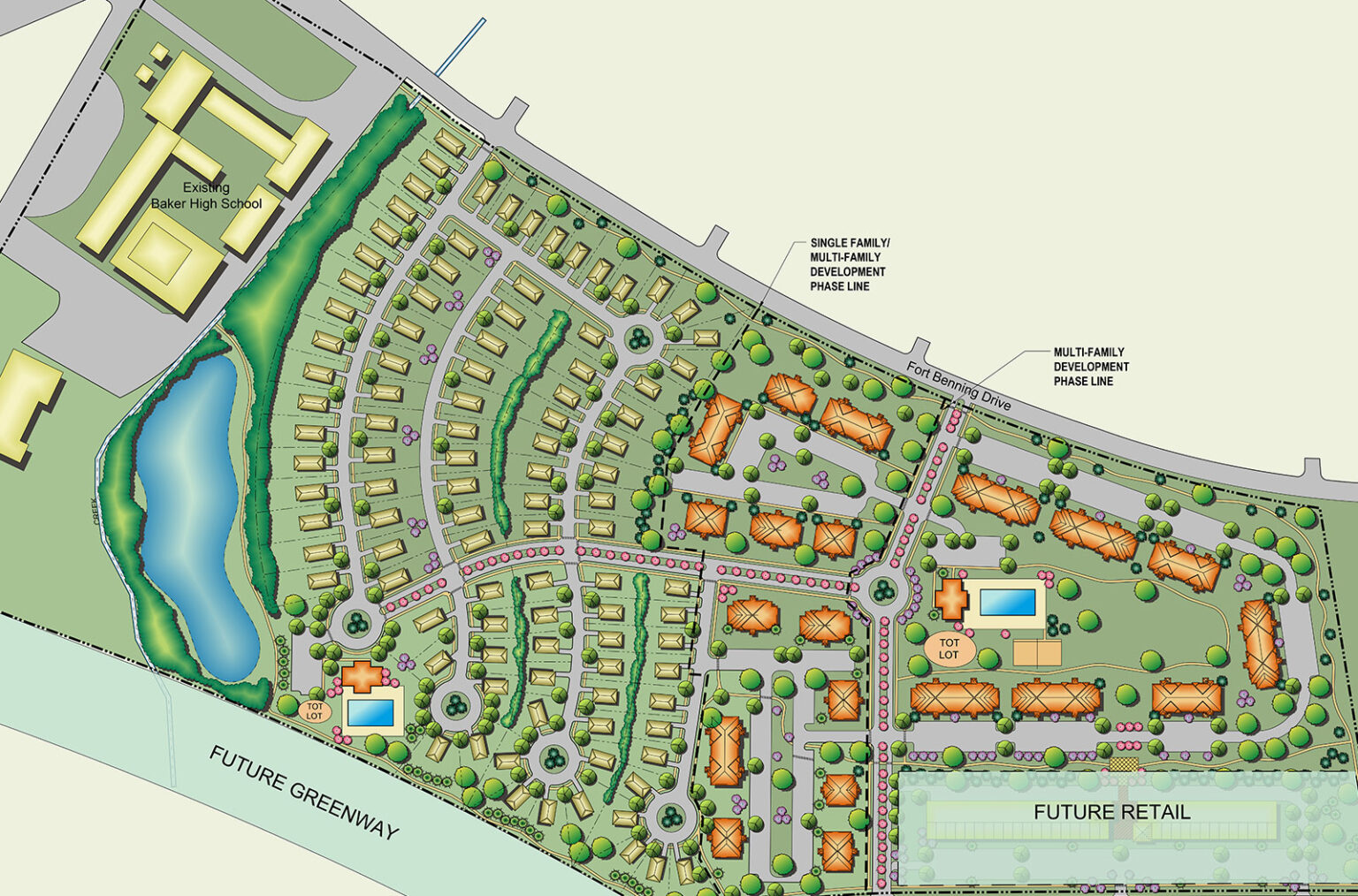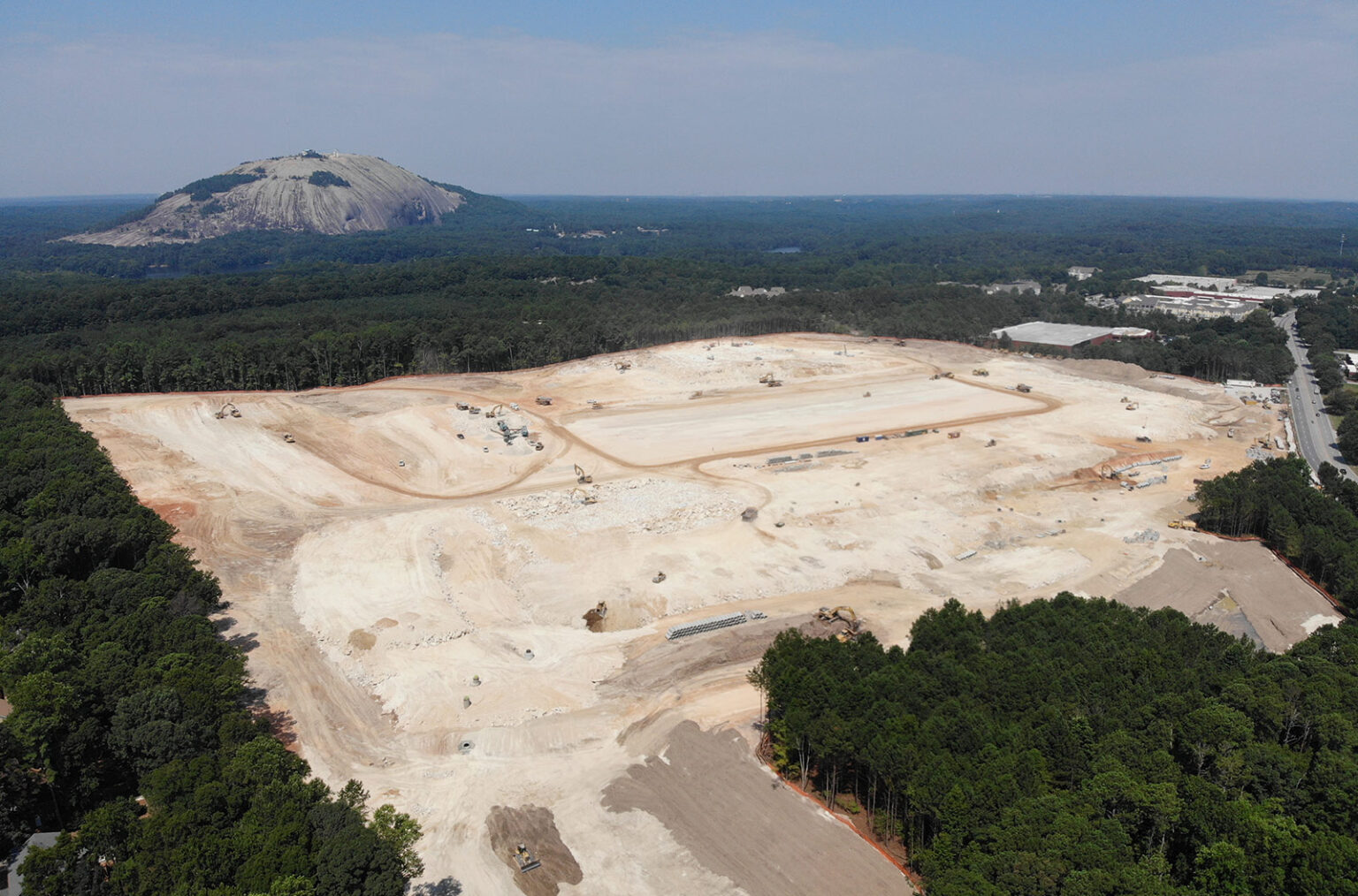Most people know that a civil engineer is a necessary team member of any site construction project, but do you know how soon in the process you should actually engage that engineer? Do you understand how a civil engineer can help maximize site development potential? And did you realize that civil engineers serve as environmental stewards on projects?
A Valuable Resource in the Land Planning Process
Civil engineers are an integral part of successful land planning efforts. Regardless of the type of facility being planned, a civil engineer knows how much area is required for both vehicle and pedestrian access points, and how traffic will flow optimally through a site. Most people don’t consider how much space is needed for emergency vehicles, such as a fire truck, to navigate around and access a building.
Another consideration is to note where detention/retention management systems might be located on the site. Because it’s a requirement for most developments, preliminary sizing of the area to be reserved for stormwater management is necessary. A civil engineer can also determine if this can be done above ground without going underground because the latter can significantly impact project costs.
The role of a civil engineer on community projects such as parks and other green spaces/trail projects, is quite similar. For these projects, the key is to determine, based on the topography, where amenities such as restrooms, basketball courts, or a dog park are best located and the best way access them.
Identifying Environmental and Infrastructure Issues
Once an owner or developer has determined the type of structure to be built (healthcare, higher/K-12 education, industrial, mixed-use, multi-family, etc.), it’s essential to engage a civil engineer to take with you when you start looking at potential building sites. Professional civil engineers are trained to look for things that aren’t obvious to others involved in the project. To us, it’s not just a piece of land. Of course, we see the adjacencies – those developments or structures located adjacent to the parcel – but we also look at the street frontage and connection points to those adjacencies. Our experience lets our eyes take in the topography and know where significant grading, drainage, or walls will be necessary for the intended project.
“Eberly’s layout on a sloping site saved us 100,000 CY of earthwork resulting in a substantial construction saving while increasing the coverage, resulting in a project that “penciled”. – Ben Hautt, Co-Managing Partner, Stream
Of particular importance in the early stages of site selection is the location of sanitary sewer. Sanitary sewer is a valuable part of any proposed infrastructure. The main thing to look for is the ability to have positive gravity sanitary sewer flows from the site into the jurisdiction’s sanitary sewer system. Coupled with the civil engineer reviewing the site topography, the engineer will also be looking to see whether the closest available public sewer is at the lower end of the site, or whether generally the topography can be overcome to allow positive sewer flows. If not feasible, then discussions and plans will be started regarding the need to have to pump sewer (Lift Station with Force Main), or whether a septic system is adequate for the development.
Additionally, a civil engineer can determine if a building or development adjacent to the site in question has a storm system that discharges across the site. If so, that could prove problematic if not properly planned for in the storm management system. Foliage density can also be a concern. For example, if a 30-40″ in diameter tree is just over the property line, the roots are, in all likelihood, on the property that is being considered, and that could impact land use.
A significant concern for any project is stormwater mitigation, and reducing the potential of sedimentation entering downstream creeks and streams. How stormwater is handled can negatively impact drainage patterns, and it is important to know how stormwater drainage from your potential project can affect buildings and developments next door or down the street. A civil engineer understands how to slow down the rate of run-off and management measures that can be implemented to address adverse water quality. Some of the strategies that can be incorporated into effective site design include:
- Channel the water into underground storage tanks or cisterns for later use for toilet flushing or collected and treated for irrigation usage.
- Considered a “best management practice”, an infiltration trench or swale is another way to manage stormwater run-off. Typically used on projects up to five acres in size, these shallow trenches are filled with gravel or crushed stone, slowing down water run-off as it pours into the ground, thereby helping to avoid
- A third strategy is the use of excess runoff from building cooling systems to be similarly collected and channeled for reuse in different aspects of the building as gray water.
A Valued Teaming Partner
A solid, collaborative relationship between the civil engineer and the architect is paramount for any successful construction project. While architects focus on the design of the structure, civil engineers help make the design possible by speaking to several project elements, including zoning setbacks, sprinkler service elements, emergency exit locations, and utility availability that can impact the location of a building on a site.
Civil engineers also identify whether streams on the property require buffers that might infringe into building areas. For example, a site may require up to a 75′ buffer that will shrink a buildable area. Additionally, if a site requires a variance due to water sources on a building site, the civil engineer will lead the effort to obtain the needed variance. To successfully obtain a variance, the civil engineer may also involve an environmental specialist to speak to the science of soils in the area.
Finally, civil engineers also provide information to architects about utility availability that impacts site layout and supports new development.
Civil engineers are always observant of adjacencies and constructability when investigating potential building sites. Because of this, they can note optimal places on or adjacent to a building site for things such as staging and possible crane locations, thereby impacting project costs.
While there are some exceptions, most of the time, the civil engineer and the architect are contracted to the developer and works alongside an architect. This contractual relationship works well because both disciplines tend to be involved in a project’s front-end or early stages advising the developer during site selection.
“As grading and utility infrastructure plays a significant role in the budget, engaging the Civil Engineer as early as possible enables us to make the best decisions for the design and therefore the Owner. We know that working with the land is better than fighting with it, that being said, we know that having the Civil Engineer come along side us in Conceptual Design will provide us with insight that will elevate our design”. – Bob Just, Principal, Cooper Carry
Sustainability and the Challenges of Adaptive Re-use Projects
The mid to late 1990s saw a shift from a significant amount of new construction to redevelopment and re use of existing facilities. This shift was ushered in by the USGBC s partnership with the Natural Resources Defense Council to create the LEED green building rating system. Since then, other green building rating systems have evolved and are used today, including WELL, SITES, Fitwel, Green Globes, BREEAM, and many others.
Civil engineers play a vital role in adaptive re-use projects. One of the primary challenges is determining how a building’s new use will impact existing infrastructure, particularly water and sewer usage. It may be necessary to upsize infrastructure or verify that it’s appropriately sized for specific uses. For instance, if a restaurant is going to be a new use in the space, grease traps will be necessary. Additionally, some older sites weren’t handicap accessible, so they will need to be retrofitted for accessible spaces, loading zones and code-compliant ramps to get into the existing facilities. Also, if there is an associated surface parking lot primarily comprised of asphalt, it will be necessary to add tree islands. Typically, stormwater is only an issue when new impervious areas are added to the project, although some jurisdictions now require storm water management based on any surface that is touched as “redeveloped”, regardless if it is impervious or not.
Furthermore, civil engineers serve as an environmental steward on construction projects, creating regenerative landscapes. Typically working with a landscape architect to select plant material, civil engineers strive to minimize site disturbance and mimic the natural setting while leaving certain sections of a site undisturbed if possible. Civil engineers also seek to make surface parking as sustainable as possible by promoting permeable type surfaces for these areas.
An example of a site where permeable and porous options were studied for driving and parking surfaces occurred at the Cherokee Town Club in Buckhead. In one section, we were limited with ways of managing the stormwater runoff due to an already overloaded storm detention system. So for the parking lot addition for the Tennis Courts, pervious concrete was used. On this same site, because the country club was in a residential community, the site was also limited with adding parking in other areas close to the property line that should have been reserved as buffers. However, since there were special event times where patrons could do overflow parking on the grass, the permeable grass pavers were implemented. This allowed the aesthetics of grass but also having the strength to hold vehicular traffic and easily manage stormwater flows.
Many sustainable elements are becoming part of building and project codes, including how stormwater is managed, so it is essential to have a civil engineer on your team that is cognizant of those elements that states and local municipalities have adopted.
Are you ready to hire a civil engineer? Contact our team today.


